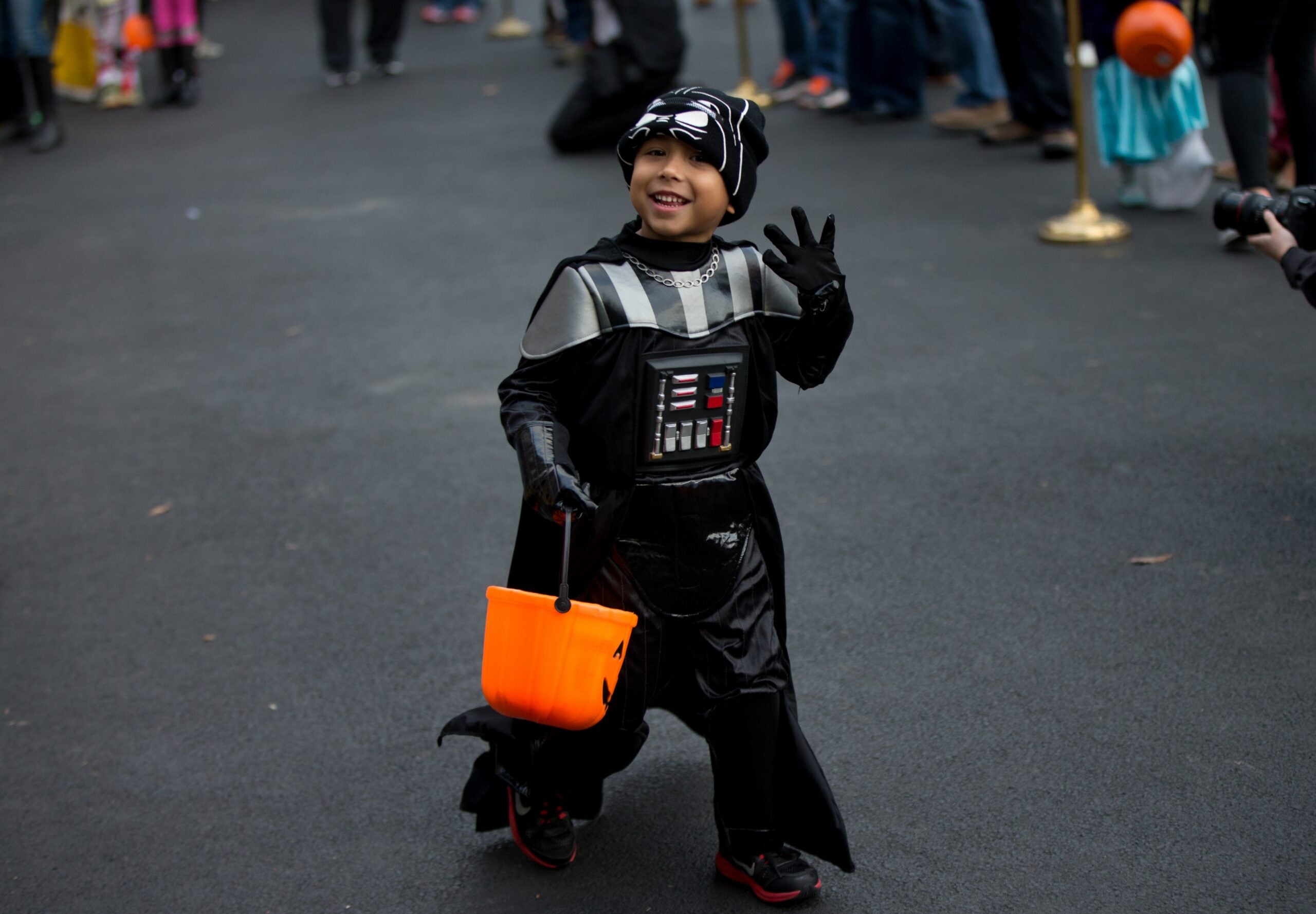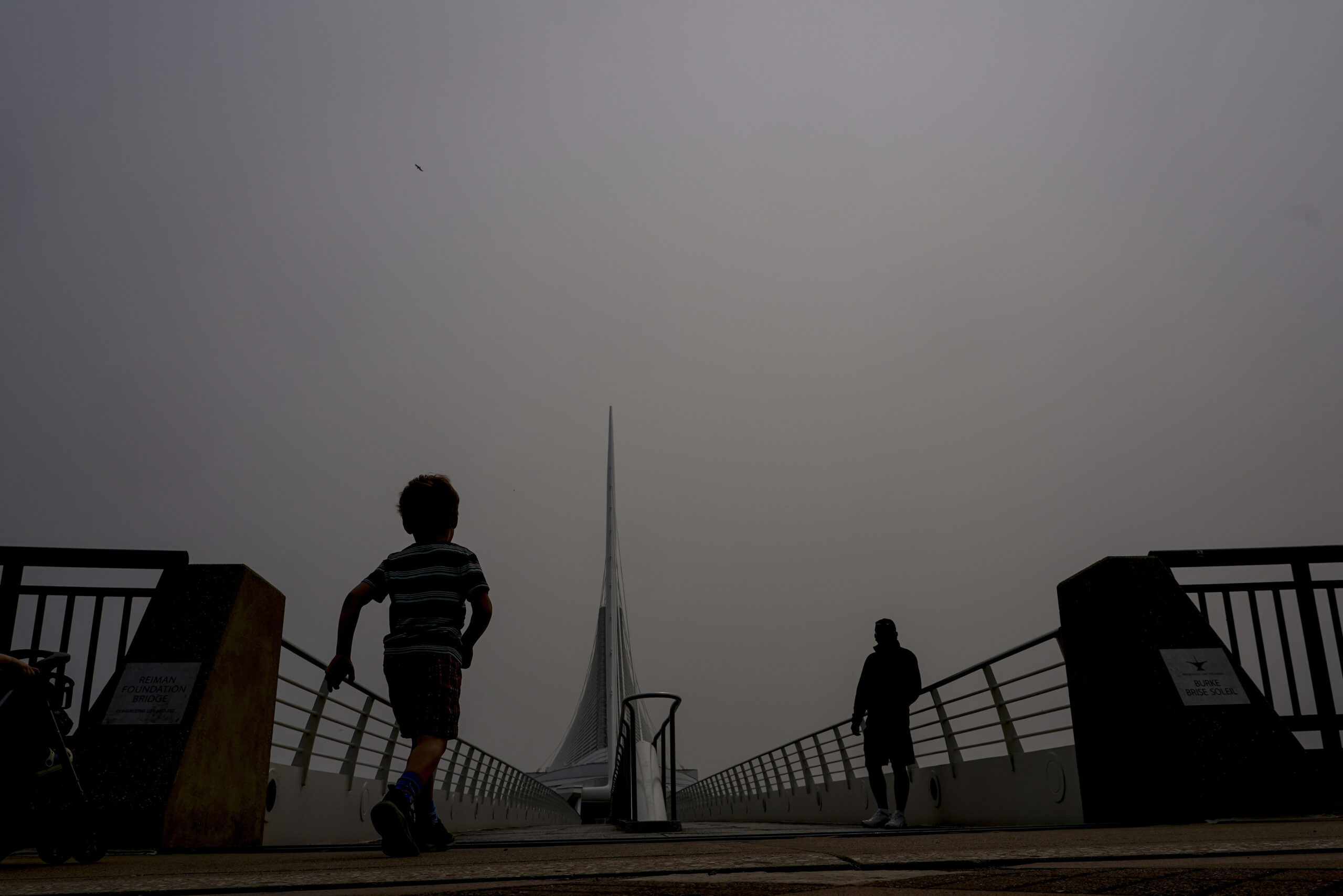Halloween is just around the corner, but it’s a year unlike any other with the coronavirus pandemic throwing traditional Halloween activities into question.
The Centers for Disease Control and Prevention recently released guidance on Halloween celebrations, naming traditions like trick-or-treating, indoor costume parties and indoor haunted houses as high-risk.
But that doesn’t mean you can’t celebrate Halloween safely this year. University of Wisconsin-Madison Epidemiologist Malia Jones answers your questions — and offers some creative alternatives to enjoying the spooky season.
Stay informed on the latest news
Sign up for WPR’s email newsletter.
The interview has been edited for brevity and clarity.
Why is trick-or-treating high risk?
The usual plan for going door to door is high risk because it involves a lot of kids bunching up in big groups, and being in close contact with the person handing out the candy, Jones said.
But Jones had some good news: With a couple of modifications, it’s pretty easy to make trick-or-treating safe.
How to do it safely
First, if you’re the person who’s handing out candy, you should make it possible for kids to keep their distance from you, and avoid having them bunch up around your door, Jones said. That means using tongs or grabbers to hand out the treats, wearing a mask and standing outside. And also, if possible, have kids come in one way and go out another, so that they’re not passing each other on a narrow sidewalk to your doorway.
Children and adults should be wearing a mask that covers their nose and face. Even if an outfit includes a costume mask, a typical face mask — like the ones worn to the grocery story or school — also need to be worn.
What are some creative ways to hand out candy without kids coming to the door?
Halloween is Jones’ favorite holiday — this year, her plan is to dress as a pageant queen, stand on a float in her front yard and toss candy to trick-or-treaters.
A few other creative ideas Jones has come across include:
- A PVC pipe delivery system. If you have steps that go up to your door, attach a piece of a PVC pipe to the railing, and release the candy from the pipe at the top of your steps and into the kids’ candy bag.
- Incorporate candy into your decorations. Place wooden stakes, or any type of decoration, in your yard and tie pieces of candy to them, where kids can pick them on their stop.
- Simply put a grab-and-go table near the sidewalk for the kids to take a piece of candy on their way by.
What are some options if your town canceled trick-or-treating?
Jones said a few ideas for alternative fun could include having a neighborhood contest to decorate your home for Halloween, creating a scavenger hunt or bingo as you walk around your neighborhood and look for Halloween decorations or items, or trick-or-treat inside your own home and do some kind of scavenger hunt Easter-egg style.
Do you need to wipe down candy wrappers before eating?
We still have not seen any good evidence of people catching COVID-19 from handling food they’re going to eat, Jones said. So you don’t need to be really obsessive about wiping off every piece of candy, but you do need to have clean hands.
It’s also important to not eat candy on the road, especially little kids because they’re messy and there’s a lot of spit involved and things get sticky, she said. Also, the mask would have to come off to do that, so wait to get home and wash your hands.
What about wearing gloves while trick-or-treating?
Gloves are not recommended to prevent the transmission of COVID-19. When you’re wearing gloves you feel like you’re protected, Jones said, but they get really dirty and you just end up spreading a lot of germs around. Wearing gloves to the grocery store, for example, isn’t a great idea.
If it’s cold out or your costume involves gloves, it’s fine to wear them — just wash your hands when you get home and keep your hands clean, she said.
What are some alternatives to traditional indoor haunted houses?
It’s increasingly evident that COVID-19 is most readily spread in crowded indoor situations, especially where people are screaming, singing or even just talking loud, Jones said. Based on those criteria, indoor haunted houses are very worrying — they’re indoors, some people might not be wearing masks and screaming can produce a lot of droplets from deep in our lungs.
Haunted houses are very high risk and people should be avoiding them, Jones said.
That said, there are a lot of ways to do Halloween traditions outdoors that are very low risk. Outdoor haunted forests are fine, if you can keep your groups small, keep your distance from other people and wear a mask, she said. Corn mazes, pumpkin patches are all OK, too.
Wisconsin Public Radio, © Copyright 2025, Board of Regents of the University of Wisconsin System and Wisconsin Educational Communications Board.



